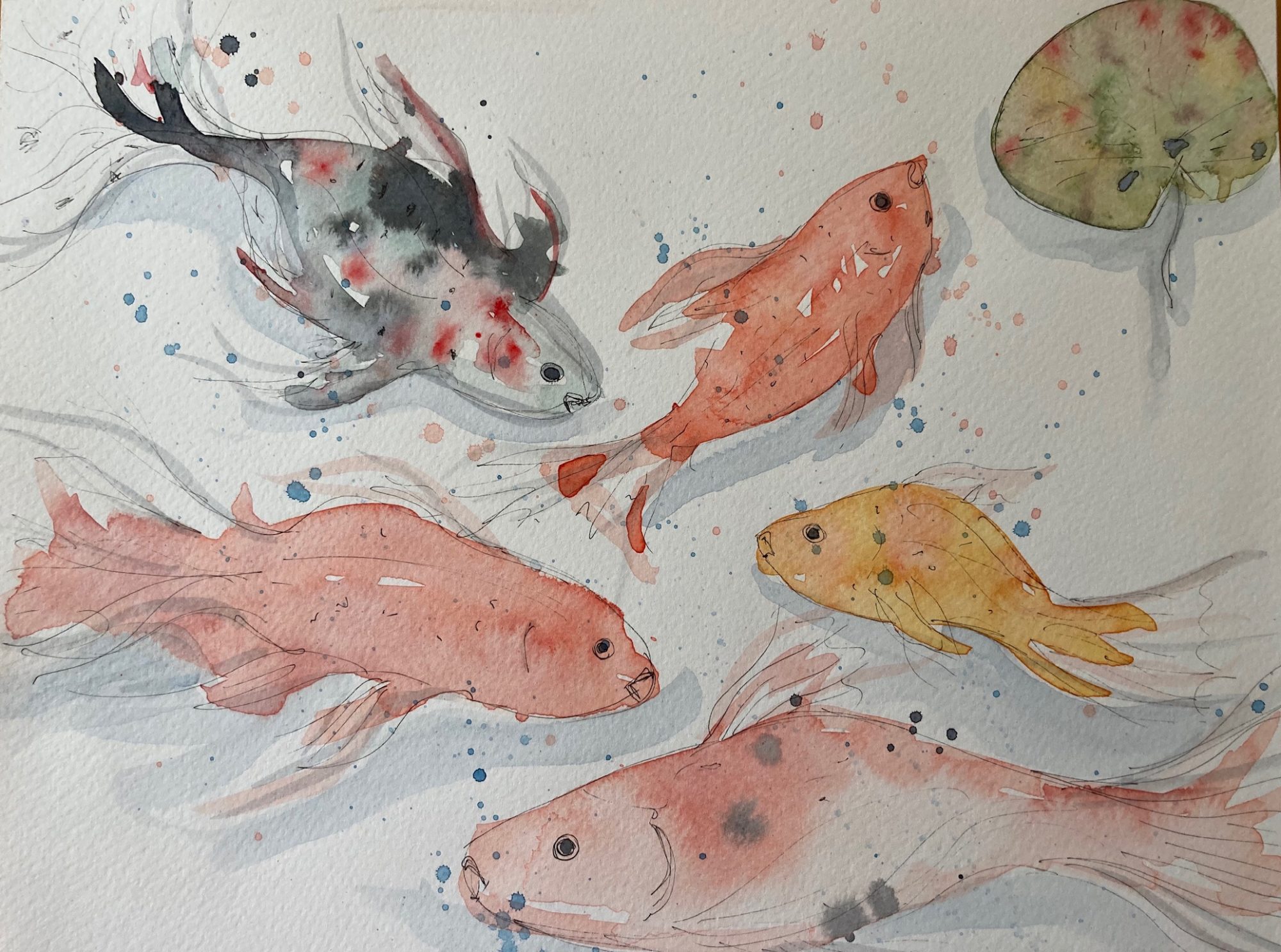Reflection
I’ve researched many illustrations of hand drawn maps by Grayson Perry, Qiu Zhijie, Roberta Faulhaber’s “art-mapping” to work out the composition of my “map”. I’ve also practiced some mindful sketching, sketched some rough ideas, practised my yoga and meditated and reflected some more. I have some chalk pastels which I’ve been experimenting various effects with, mark making and exploring colour palettes whilst listening to some chilled jazz muzak. I really need to stop procrastinating, I can’t use all the colours and all the ideas. I need to be selective!
Last night I watched the final episode on tv about the artist Ophelia Redpath on Sky Arts “Landscape Artist of the Year 2021”. She was sketching the landscape in Dinas Oleu, Snowdonia. I really empathised with her as she told the cameras she felt completely overwhelmed by the sensory overload of details and how she wanted to capture it all, not to leave anything out.
- Create my time plan and keep to it as much as possible.
- I will experiment with materials/ papers and try and establish a colour palette
- I will experiment further in developing my images into firmer solutions, and then narrow those down – (meditating Buddah’s too predictable?) What elements do I want to include?
- I will look at combining fractals with images and explore pathways of maps and veins and tree branches
- Experiment with map forms – what might it look like in essence? Will it fold or roll? Will it have a border or a compass? Astrological map? Mystical garden? Circular 360 degree? Fictional neural pathways in the mind? How will the points in it connect? (Is it a map of nowhere and also of everywhere) (Grayson Perry maps)
- Collaged/ephemera photos – start gathering suitable ideas for inclusion
- Sketch more trees and branches, leaves, fractals – what about dragonfly wings? Butterflies?
Feedback and reflection from tutorial 11/3/2021
Add further references to bibliography
https://www.nationaltrust.org.uk/features/sky-arts-landscape-artist-of-the-year
https://opheliaredpath.com/
https://www.royalacademy.org.uk/article/grayson-perry-ra-s-portraits-of
https://www.bodleian.ox.ac.uk/news/2019/apr-29
It has been discovered that Jackson Pollock’s paintings have fractal patterns running through them. I backtracked a bit and researched fractals in nature, I’m particularly inspired by the fractal pattern structures found in trees and leaves.
Feedback and reflection from tutorial 11/3/2021
I need to remember to use my project proposal as a measure of my progress and check I am going in a relevant direction.
What aspects of mindfulness do I want to show in my project?
What are the benefits of mindfulness? Are there goals to be reached? (Not necessarily as it can put pressure on someone who suffers from an anxiety disorder to reach something they feel is unattainable. What will the headspace be that the onlooker needs to be in to practice it? I need the project to be a balanced view of self-help because if someone happens to be in a bad place mentally some people can’t get out of it on their own and need professional help. Some of my tutor feedback was to explore mindfulness through printing techniques – look at mono printing, dry point etching, and get a variety of marks in controlled vs uncontrolled results.
Will it be a book or a map? A zine? Will the book or magazine be bought and paid for? Will it be for a mental health charity?
I have established that my aim is to visualise and follow the sensory effects of nature on the mind in the practice of mindfulness.





























